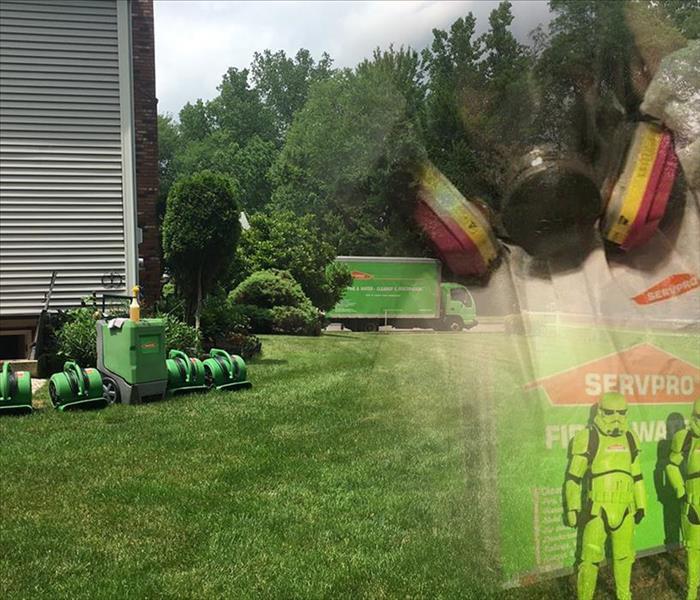Personal Protective Equipment (PPE) for Mold
5/8/2018 (Permalink)
Any remediation work that disturbs mold and causes mold spores to become airborne increases the degree of respiratory exposure. Actions that tend to disperse mold include: breaking apart moldy porous materials such as wallboard; destructive invasive procedures to examine or remediate mold growth in a wall cavity; removal of contaminated wallpaper by stripping or peeling; using fans to dry items or ventilate areas.
The primary function of personal protective equipment is to prevent the inhalation and ingestion of mold and mold spores and to avoid mold contact with the skin or eyes. The following sections discuss the various types of PPE that may be used during remediation activities.
Skin and Eye Protection
Gloves protect the skin from contact with mold, as well as from potentially irritating cleaning solutions. Long gloves that extend to the middle of the forearm are recommended. The glove material should be selected based on the type of substance/ chemical being handled. If you are using a biocide such as chlorine bleach, or a strong cleaning solution, you should select gloves made from natural rubber, neoprene, nitrile, polyurethane, or PVC. If you are using a mild detergent or plain water, ordinary household rubber gloves may be used.
To protect your eyes, use properly fitted goggles or a full face piece respirator. Goggles must be designed to prevent the entry of dust and small particles. Safety glasses or goggles with open vent holes are not appropriate in mold remediation.
Respiratory Protection
Respirators protect cleanup workers from inhaling airborne mold, contaminated dust, and other particulates that are released during the remediation process. Either a half mask or full face piece air-purifying respirator can be used. A full face piece respirator provides both respiratory and eye protection. Please refer to the discussion of the different levels of remediation to ascertain the type of respiratory protection recommended. Respirators used to provide protection from mold and mold spores must be certified by the National Institute for Occupational Safety and Health (NIOSH). More protective respirators may have to be selected and used if toxic contaminants such as asbestos or lead are encountered during remediation.
As specified by OSHA in 29 CFR 1910.134 individuals who use respirators must be properly trained, have medical clearance, and be properly fit tested before they begin using a respirator. In addition, use of respirators requires the employer to develop and implement a written respiratory protection program, with worksite-specific procedures and elements.
Protective Clothing
While conducting building inspections and remediation work, individuals may encounter hazardous biological agents as well as chemical and physical hazards. Consequently, appropriate personal protective clothing (i.e., reusable or disposable) is recommended to minimize cross-contamination between work areas and clean areas, to prevent the transfer and spread of mold and other contaminants to street clothing, and to eliminate skin contact with mold and potential chemical exposures.
Disposable PPE should be discarded after it is used. They should be placed into impermeable bags, and usually can be discarded as ordinary construction waste. Appropriate precautions and protective equipment for biocide applicators should be selected based on the product manufacturer's warnings and recommendations (e.g., goggles or face shield, aprons or other protective clothing, gloves, and respiratory protection).
Learn more about mold and what to do until help arrives by reviewing these mold damage tips.






 24/7 Emergency Service
24/7 Emergency Service
